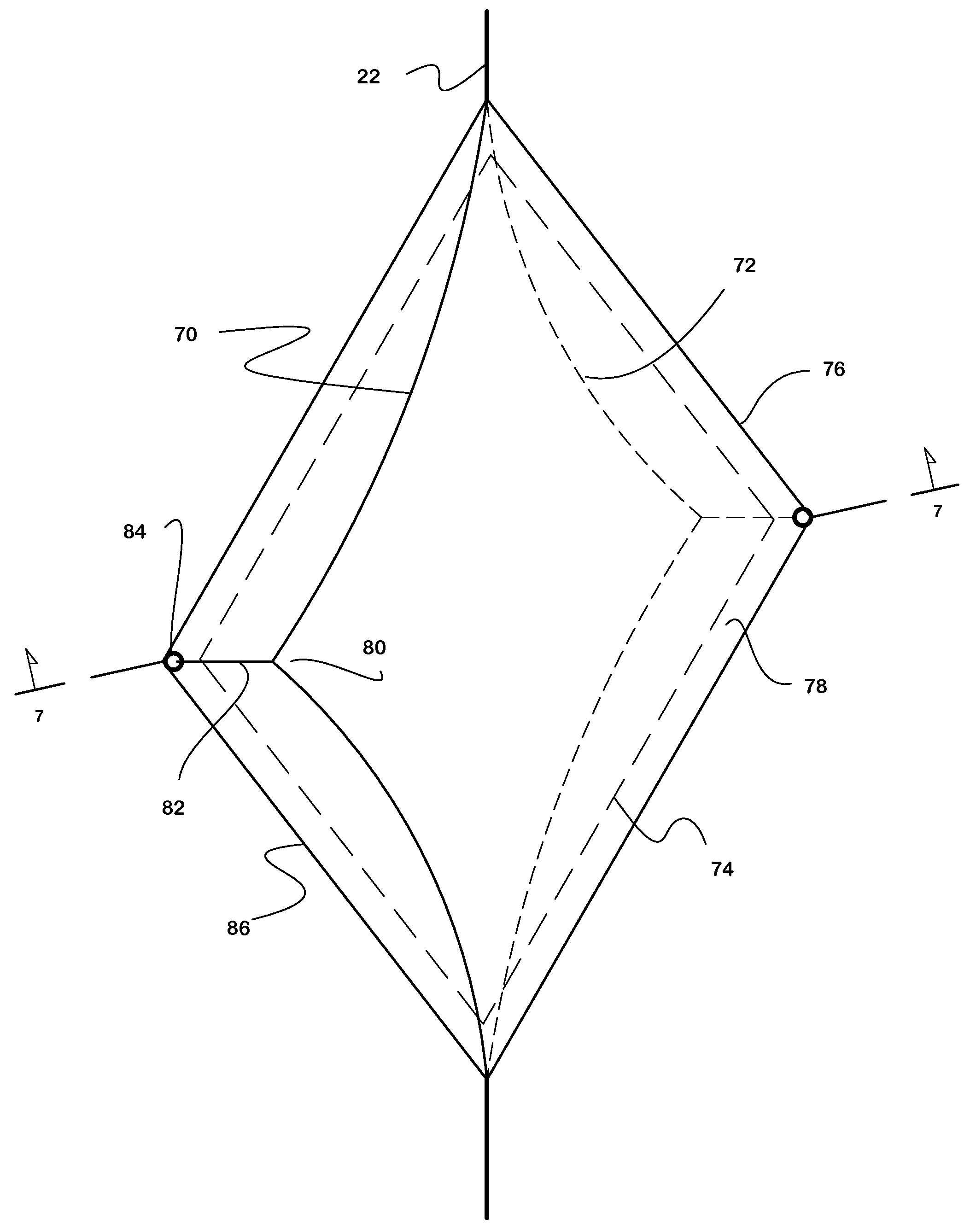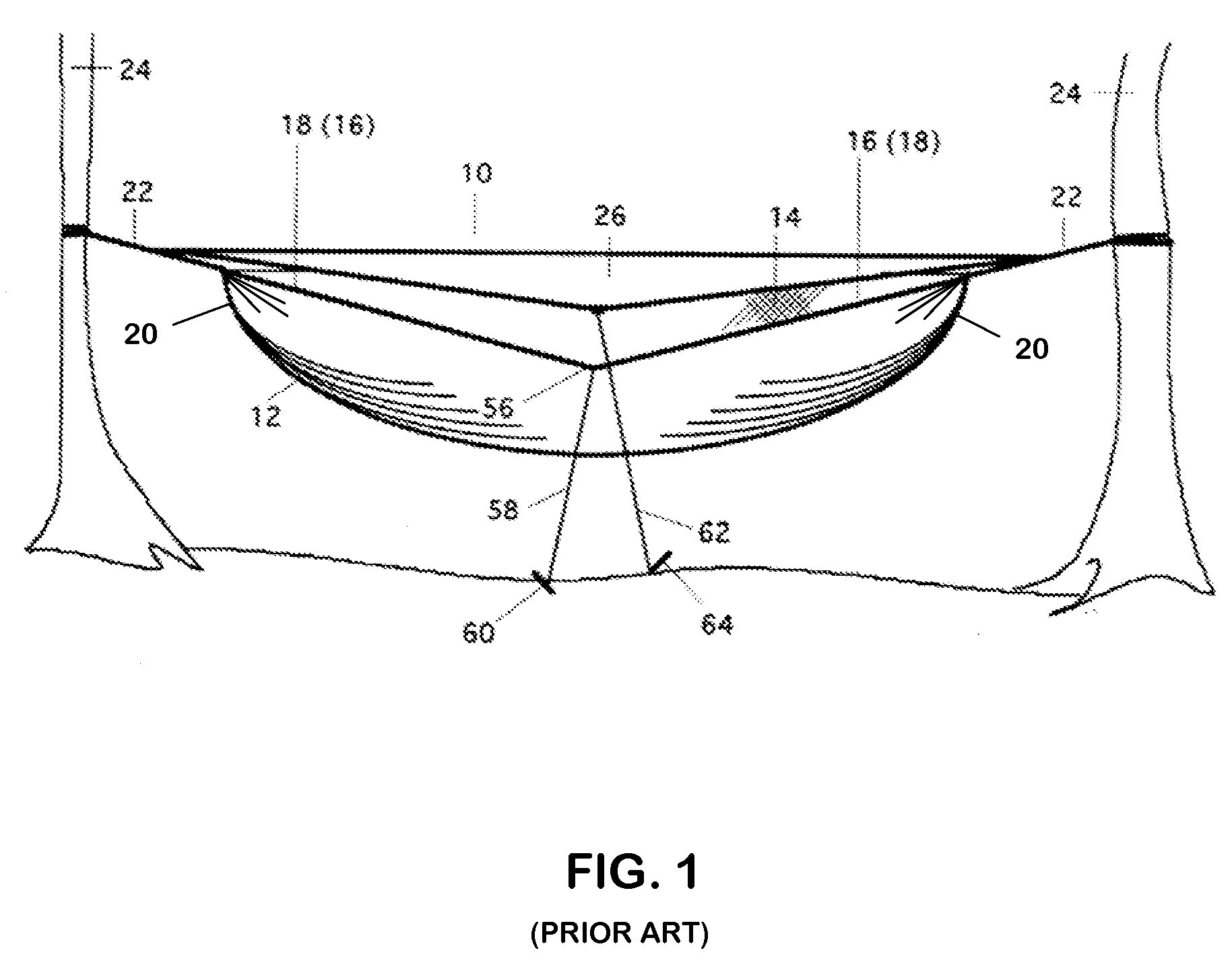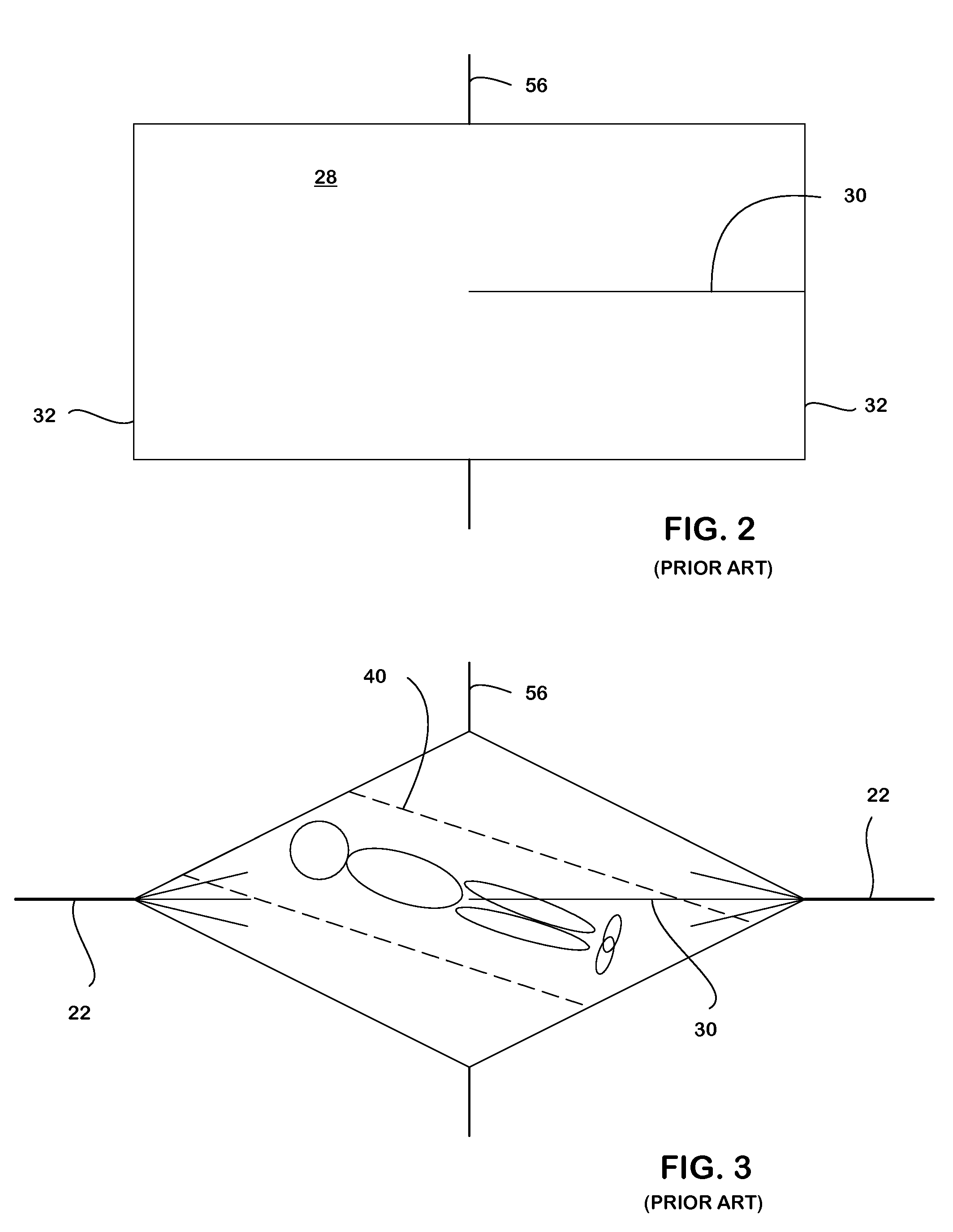Hammock Having Insulation Retaining Panels
a technology of insulation retention and hammocks, applied in the field of hammocks, can solve the problems of reducing the insulation factor, and difficult and sometimes dangerous, and achieve the effect of improving the warmth and comfort of the hammock
- Summary
- Abstract
- Description
- Claims
- Application Information
AI Technical Summary
Benefits of technology
Problems solved by technology
Method used
Image
Examples
Embodiment Construction
[0026]A hammock 10 embodying the invention comprises a bed 12 and an insect net 14. The net is located above the bed and is attached along the net's edges 16 to the longitudinal edges 18 of the bed. Each end 20 of the bed is gathered and connected by a suspending rope 22 to one of a pair of spaced anchors 24 such as trees.
[0027]An optional canopy 26 overhangs the insect net 14. Cords 58, 62 extending from the midpoint 56 of the bed and canopy, respectively, may be tied to anchors 60, 64 at either side of the hammock to keep the bed and the canopy spread out.
[0028]The bed 12 of the hammock is made from a substantially rectangular sheet 28 (see FIG. 2) of flexible breathable material. It must be of sufficient strength and resilience to withstand an appropriate load and repeated use under varying conditions. Nylon, polyester or a synthetic fabric with similar qualities is used.
[0029]In one version, not essential to the present invention, an entrance slit 30 extends from one of the shor...
PUM
 Login to View More
Login to View More Abstract
Description
Claims
Application Information
 Login to View More
Login to View More - R&D
- Intellectual Property
- Life Sciences
- Materials
- Tech Scout
- Unparalleled Data Quality
- Higher Quality Content
- 60% Fewer Hallucinations
Browse by: Latest US Patents, China's latest patents, Technical Efficacy Thesaurus, Application Domain, Technology Topic, Popular Technical Reports.
© 2025 PatSnap. All rights reserved.Legal|Privacy policy|Modern Slavery Act Transparency Statement|Sitemap|About US| Contact US: help@patsnap.com



